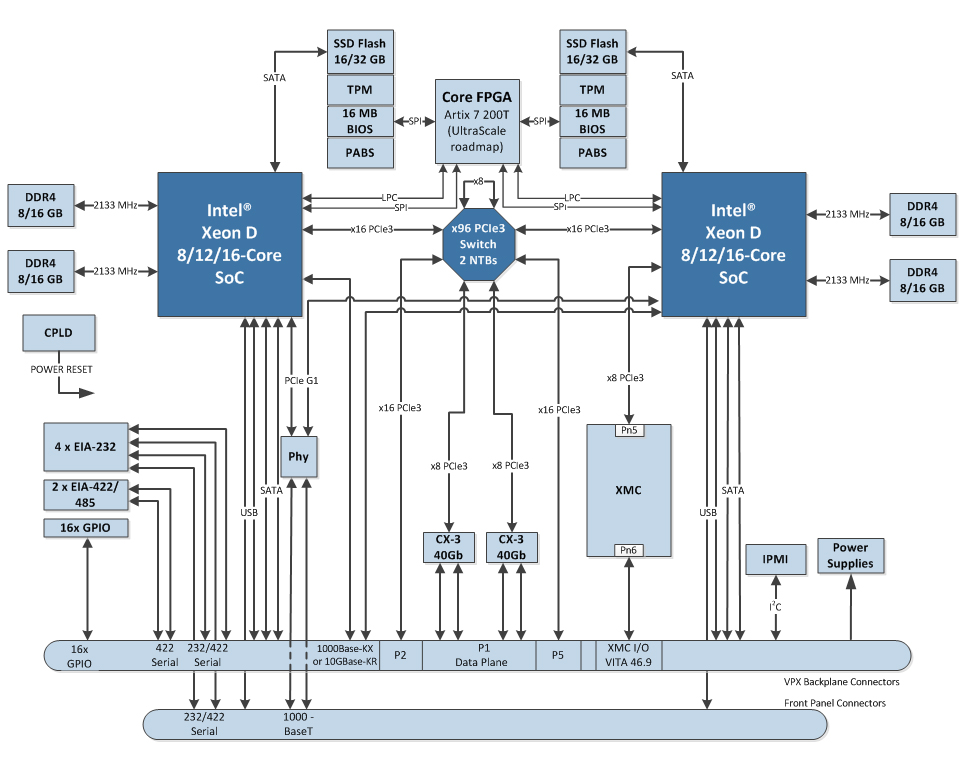
Without a doubt, the Intel Xeon D represents the most significant device for the Defense Industry in a while. This isn’t just because it is a true System-On-Chip in an extended temp BGA package, but because it is a whole family of Xeon D chip SKUs with a common footprint. Board developers such as Curtiss-Wright can produce a single PCB that can then hold any one of the Xeon D SKUs, enabling the application developer to choose the best Xeon D for the job. The trade space at this silicon SKU level includes number of cores vs. TDP vs. clock frequency vs. standard or extended temperature.
A different trade can be made at the board level in terms of architectural optimizations. As per Figures 1a and 1b, Curtiss-Wright is currently producing two 6U OpenVPX modules based on the Intel Xeon D, the CHAMP-XD2 and the CHAMP-XD2M. The XD2 contains two Xeon D devices with up to 32 GBytes of DDR4-2133 each, providing up to 32 cores on a single module in total. In contrast, the XD2M contains a single Xeon D with up to 16 cores, however 128 GBytes is available to the processor. Another way to look at it is the CHAMP-XD2 provides for 2 GBytes per Xeon D core as opposed to the CHAMP-XD2M, which provides for 8 GBytes per core, keeping in mind that the XD2M has half the core count as the XD2 per VPX board slot.
